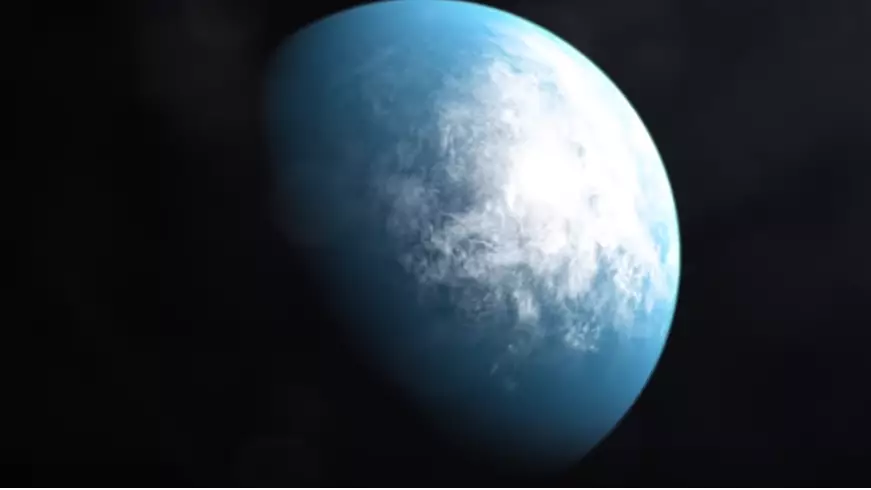
NASA's planet hunter TESS (Transiting Exoplanet Survey Satellite) has discovered its very first Earth-sized planet in its star's habitable zone, the space agency has announced.
NASA scientists confirmed the discovery using NASA's Spitzer Space Telescope, and have named the planet TOI 700 d. Catchy.
Advert
It is one of only a few Earth-sized planets discovered in a star's habitable zone - which NASA defines as 'the range of distances where conditions may be just right to allow the presence of liquid water on the surface' - with others including several planets in the TRAPPIST-1 system, along with some planets discovered by NASA's Kepler Space Telescope.
Paul Hertz, astrophysics division director at NASA Headquarters in Washington, said: "TESS was designed and launched specifically to find Earth-sized planets orbiting nearby stars. Planets around nearby stars are easiest to follow-up with larger telescopes in space and on Earth.
"Discovering TOI 700 d is a key science finding for TESS."
According to NASA, TOI 700 is a 'small, cool M dwarf star' located just over 100 light years away in the southern constellation Dorado, which is roughly 40 percent of the Sun's mass and size and about half its surface temperature.

The innermost planet, which is called TOI 700 b, is 'probably rocky', almost exactly the same size as Earth and completes an orbit every 10 days.
Advert
Meanwhile, TOI 700 c, the middle planet, is 2.6 times later than Earth, is likely to be a 'gas-dominated' world and orbits every 16 days.
TOI 700 d, the latest discovery, is the outermost-known planet in the system, and is the only one that lies in the star's habitable zone. Twenty percent larger than Earth, it orbits every 37 days and receives from its star 86 percent of the energy that the Sun provides to Earth.
NASA explained: "All of the planets are thought to be tidally locked to their star, which means they rotate once per orbit so that one side is constantly bathed in daylight."
The star was originally misclassified in the TESS database as being more similar to our Sun, but eventually the error was identified.
Advert
A team of scientists then requested follow-up observations with Spitzer to confirm TOI 700 d, in turn increasing their confidence that TOI 700 d is a real planet, while also sharpening their measurements of its orbital period by 56 percent and its size by 38 percent.
Joseph Rodriguez, an astronomer at the Centre for Astrophysics Harvard & Smithsonian who led the team, said: "Given the impact of this discovery - that it is TESS's first habitable-zone Earth-size planet - we really wanted our understanding of this system to be as concrete as possible.
"Spitzer saw TOI 700 d transit exactly when we expected it to. It's a great addition to the legacy of a mission that helped confirm two of the TRAPPIST-1 planets and identify five more."
Advert
While exact conditions on TOI 700 d are still unknown, scientists will be able to use all the current information they know to generate computer models and make predictions.
Gabrielle Englemann-Suissa, a Universities Space Research Association visiting research assistant at Goddard, added: "Someday, when we have real spectra from TOI 700 d, we can backtrack, match them to the closest simulated spectrum, and then match that to a model.
"It's exciting because no matter what we find out about the planet, it's going to look completely different from what we have here on Earth."
Featured Image Credit: NASA
Topics: World News, News, Nasa, space
